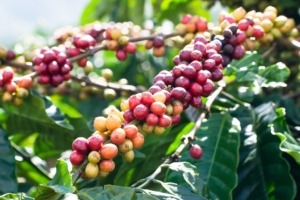What Do Coffee and Cherries Have in Common? Discover the Answer Every Coffee Lover Should Know
No doubt you’re all too familiar with that delectable daily delight that only coffee can deliver. But do you know how your cup of coffee came to be? Here’s its origin story.
It Starts With the Plant

A coffee bean plant is a tall shrub reminiscent of a berry bush. Like most plants, species abound, with the Arabica and the Robusta plants being the most well-known. Arabicas are the most popular and prolific; varieties grow all over the world in countries near the equator. These plants can take four years to begin to bear fruit.
Arabica vs. Robusta Beans
Most artisan coffees are made with various Arabica beans; they are considered far superior in quality and flavor. Arabica beans tend to be grown at higher elevations, and most growers give the beans longer to grow to enhance their flavor. In contrast, Robusta beans are considered lower quality and are often used for instant coffee. Their varieties are more disease-resistant and produce a higher yield. Robusta beans do, however, contain more caffeine.
“Coffee Cherries”
Coffee beans are actually the seeds that grow on coffee plants. They are called “coffee cherries.” When they turn red, they’re ready to be harvested.
Most are still picked by hand. Proficient pickers can harvest 100-200 pounds of coffee cherries daily, representing 20-40 pounds of coffee beans.
After harvesting, the coffee cherries are processed to remove the beans from their outer shell.
Each berry contains two beans enclosed in parchment. The hulling stage removes the parchment before being graded and sorted.
More Coffee Origin Fun Facts
- Coffee tasters, known as cuppers, test the beans to ensure their quality before roasting.
- Each cup of coffee is made of roughly 38 coffee cherries or 76 coffee beans.
- Roasting unlocks the fragrant oils inside the beans, creating the flavor and aroma we love.
- Although coffee shrubs can grow to 16 feet, most are trimmed to 5-7 feet for easier picking.
- Coffee cherries start as blooms that flower for a month.
- Arabica flowers are self-pollinating; Robusta flowers aren’t.
Understanding what it takes to get that perfect brew into your cup makes it taste that much better. Let BostonbeaN handle the last mile of the coffee bean’s journey — getting it into the coffee cups of your team.
Contact BostonbeaN today to supply your office with hassle-free solutions for your employees, including snacks and grab-and-go fresh food, cold water and beverages, and hot and cold coffee and tea options.






